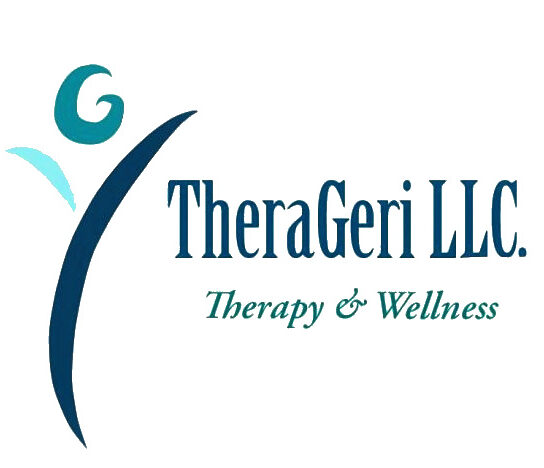Fall Effects
By: Charmine Kay Bartlett

A fall can result in injuries e.g. hip fracture and traumatic brain injury, fear behavior limiting functional activities and community participation, which could lead into more detrimental results that are debilitating and life changing as a consequence.1 2
Falls are the leading cause of injuries among older adults i.e.>/= 65 y/o in the United States, which is about one in four adults (28%) age 65 and older, report falling each year. This results in about 36 million falls each year.2 There are countless times in my practice at home setting when I have to call 911 or physicians to report the incidents of fall. It is a big deal in healthcare! What is considered a “fall?” According to WHO (World Health Organization), “a fall is defined as an event which results in a person coming to rest inadvertently on the ground or floor or other lower level. Fall-related injuries may be fatal or non-fatal, though most are non-fatal.”3 This means, even if one stumbles and tries to reach a lower support to stop the fall, may be considered a fall incident. A fall is a fall that could be linked to multiple health conditions, in particular with our older adult population! To name a few, quoting from CDC:
- Body weakness (lower body to generalized)
- Not enough vitamin D in your system (Vit. D deficiency)
- Difficulties with walking and balance (e.g. peripheral neuropathy, vestibular problems)
- Use of medicines, such as tranquilizers, sedatives, or antidepressants. Even some over-the-counter medicines can affect balance and how steady you are on your feet.
- Vision problems
- Foot pain or poor footwear
- Home hazards or dangers such as
- Broken or uneven steps, and
- Throw rugs or clutter that can be tripped over. 2
In addition, chronic conditions e.g. DM, infections and progressive conditions e.g. Parkinson’s disease., Multiple Sclerosis etc.1 These above mentioned risk factors are for real. I have seen the graveness in various degrees multiple times in all therapy settings I’ve been with! In fact, I see it everyday! It is indeed a public health concern. “In 2018, an estimated 3 million emergency department visits, more than 950,000 hospitalizations or transfers to another facility (e.g., trauma center), and approximately 32,000 deaths resulted from fall-related injuries among older adults. Deaths from falls are increasing, with the largest increases occurring among persons aged ≥85 years.” 4 In Alabama alone, CDC (Center for Disease Control- STEADI) estimated 30.7% fell as of 2018, which is higher than the national rate as stated above, 28%. According to PRB (Population Reference Bureau), Alabama (my state) ranked 21st by percent of population ages 65 and older (2018). While 1 quarter of Americans live in California, Texas and Florida. Yet, the estimates of fall rates are almost comparable (California 30.6%, Texas 33.9% and Florida 25.4%.) Well yes, someone may discord that these 3 states may not have the oldest population age profiles compared to Maine, which is ranked #1. If that makes sense, which it does to me, on the contrary. We don’t just look at the rates, though. We should understand the healthcare costs as a consequence to every dollar bill we save for our health plan, Medicare it is. CDC stated, “Each year about $50 billion is spent on medical costs related to non-fatal fall injuries and $754 million is spent related to fatal falls.” 2 Jaw dropping, isn’t it?
Is there anything we can do?
There are numerous evidenced-based strategies that can be beneficial to prevent falls. WHO, NIH- NIA, NCOA, CDC – STEADI are some of the leading organizations, who have a wealth of information. Fall is a problem that has been a good topic to direct hypotheses towards initiating research for a while.
As a geriatrics physical therapist, who is advocating for the wellness of my patients, there are various ways I can help too (and so with thousands of physical therapists nationally or globally). Fall-prevention exercise programs that are individualized to patient’s needs e.g. progressive resistance strength training; balance retraining; home assessment/ safety interventions; vitamin D supplementation in people with lower vitamin D levels (in consultation with physician, of course); and individually targeted multifactorial interventions were associated with lower fall rates in community-dwelling people.5 Substantial evidence proves multifactorial interventions (e.g. involvement of OT for ADLS or ST for cognitive deficits etc.) to be more effective, yet it all depends on the result of fall risk assessment / evaluation of the person at risk, in regards to determining necessary needs.
Why do we need a healthcare professional like PT to initiate your fall prevention program? Falls can be complex. Thus, it requires a comprehensive assessment. There could be red flags or sinister causes that’ll need more appropriate specialists to consult with. Physical therapists are skilled to detect this, and may also provide annual fall assessment. However, fall needed multifaceted strategies to effectively prevent it. To name some: education of older adults and communities i.e. senior center; and of the public about the risk factors, continued research to explore the risks, build safer environments and train healthcare providers.2 3 Creating awareness is an old fashioned way but the most effective. Well, that is my opinion.
What are the evidence-based fall prevention programs? I refer you to check out the following:
Coordinated CarePlan to Prevent Older Adult Falls:
https://www.cdc.gov/steadi/pdf/Steadi-Coordinated-Care-Final-4_24_19.pdf
A CDC Compendium of Effective Fall Interventions: What Works for Community – Dwelling Older Adults
https://www.cdc.gov/homeandrecreationalsafety/pdf/falls/CDC_Falls_Compendium-2015-a.pdf
Evidence-Based Falls Prevention Programs by National Council on Aging
https://www.ncoa.org/healthy-aging/falls-prevention/falls-prevention-programs-for-older-adults-2/
Summary of Updated American Geriatrics Society/British Geriatrics Society Clinical Practice Guideline for Fall prevention of Older Adults. 6
https://pubmed.ncbi.nlm.nih.gov/21226685/
Reference:
1.Sherrington C, Tiedemann A. Physiotherapy in the prevention of falls in older people. Journal of Physiotherapy 2015; 61: 54–60. Australian Physiotherapy Association. Published by Elsevier B.V. This is an open access article under the CC BY-NC-ND license (http://creativecommons.org/licenses/by-nc-nd/4/).
2. https://www.cdc.gov/falls/facts.html
3.https://www.who.int/news-room/fact-sheets/detail/falls#:~:text=A%20fall%20is%20defined%20as,though%20most%20are%20non%2Dfatal.
4.Moreland B, Kakara R, Henry A. Trends in Nonfatal Falls and Fall-Related Injuries Among Adults Aged ≥65 Years — United States, 2012–2018. MMWR Morb Mortal Wkly Rep. 2020;69:875–881. DOI: http://dx.doi.org/10.15585/mmwr.mm6927a5.
5.Gillespie L.D, Robertson M.C. Fall Prevention in Community-Dwelling Older Adults. JAMA. 2015; Vol.309, No.13. American Medical Association.
6.Panel on Prevention of Falls in Older Persons, American Geriatrics Society and British Geriatrics Society. Summary of the Updated American Geriatrics Society/British Geriatrics Society clinical practice guideline for prevention of falls in older persons. J Am Geriatr Soc. 2011 Jan;59(1):148-57. doi: 10.1111/j.1532-5415.2010.03234.x. PMID: 21226685.
